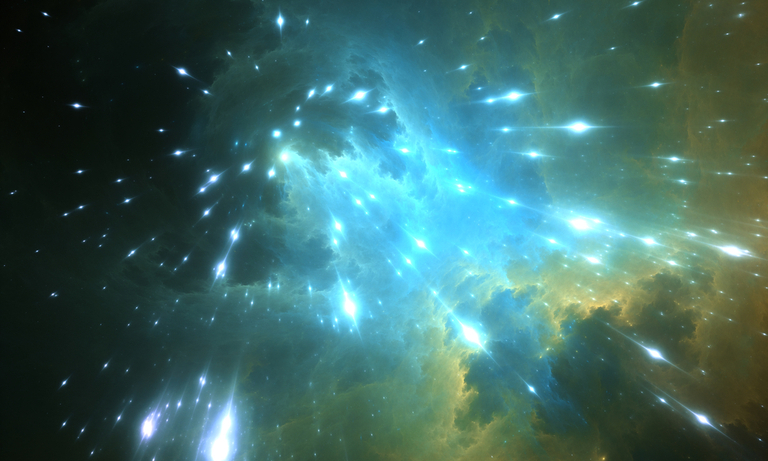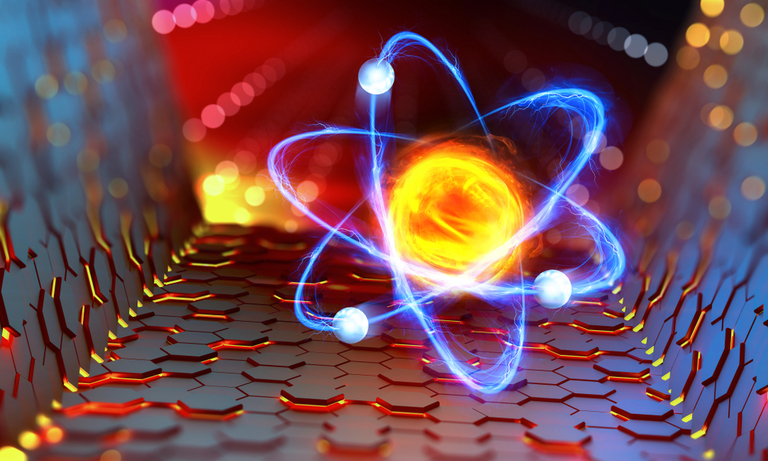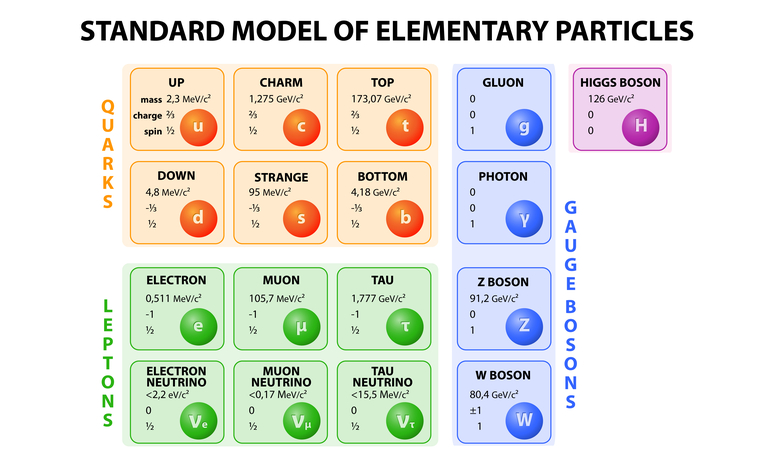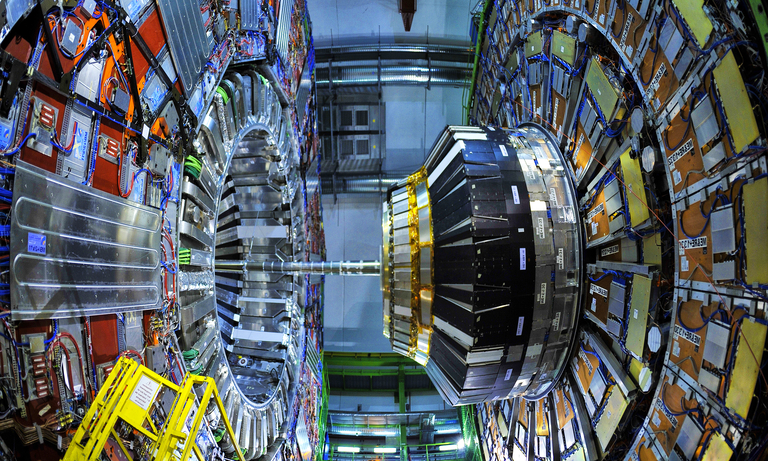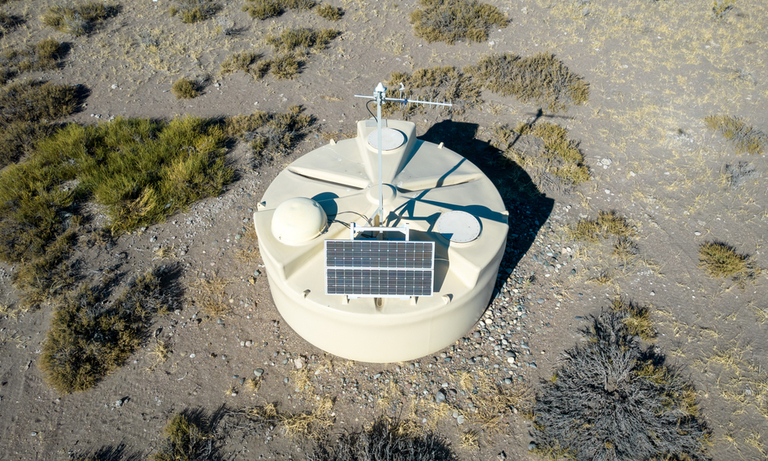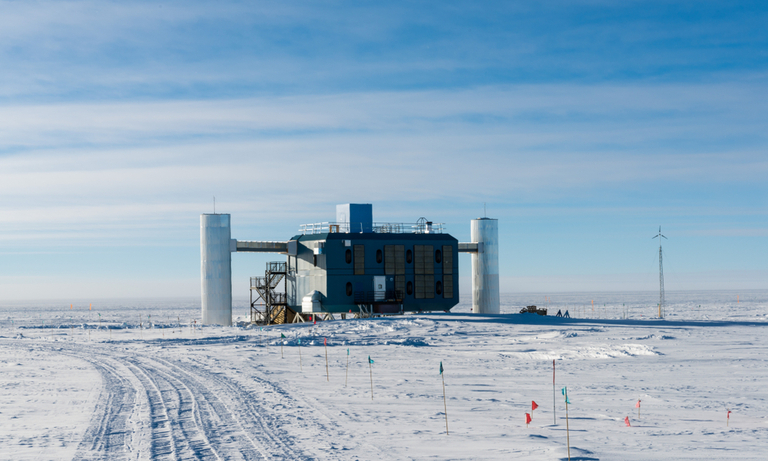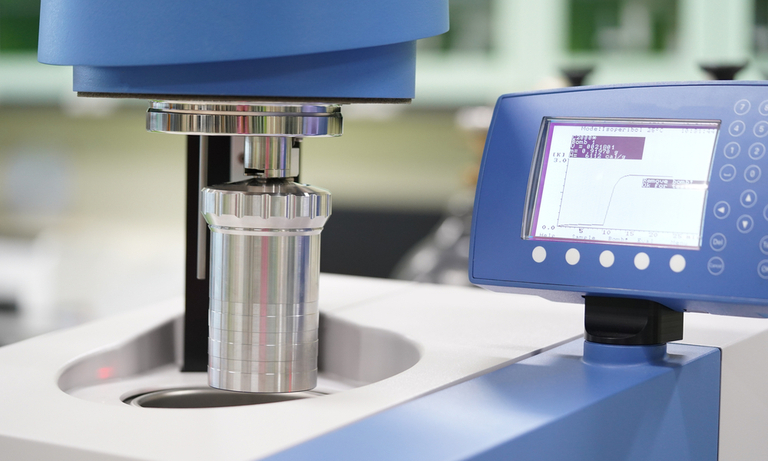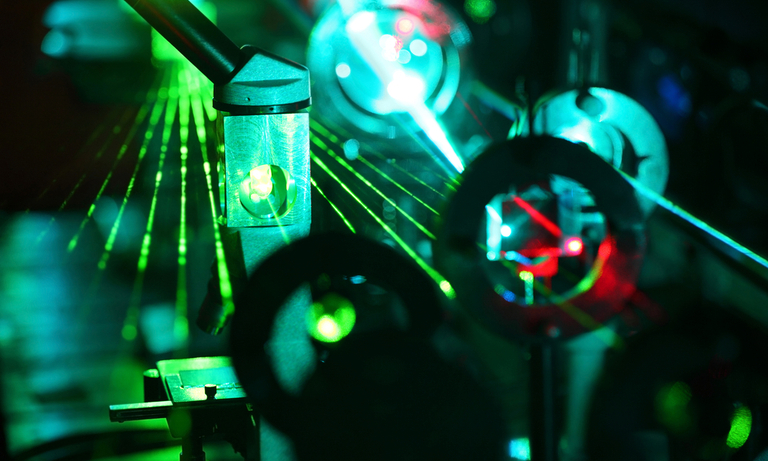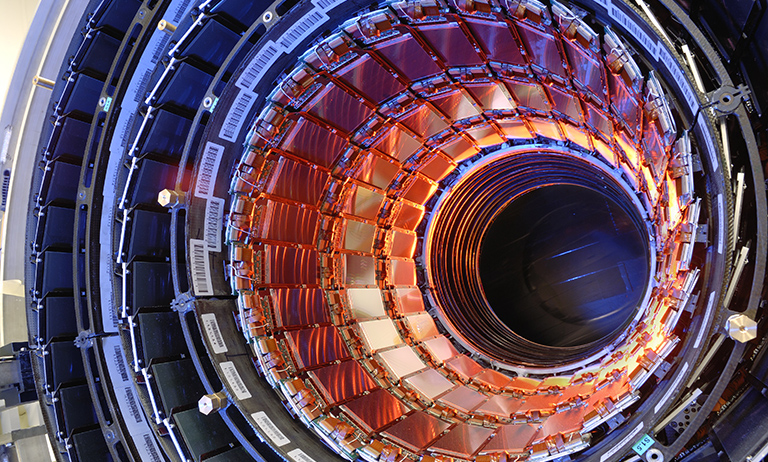Home
Products
Physics Research Field
Type of Experiment
Detector Type
Behind the Science
Tech in a Nutshell
United Kingdom (EN)
Select your region or country.

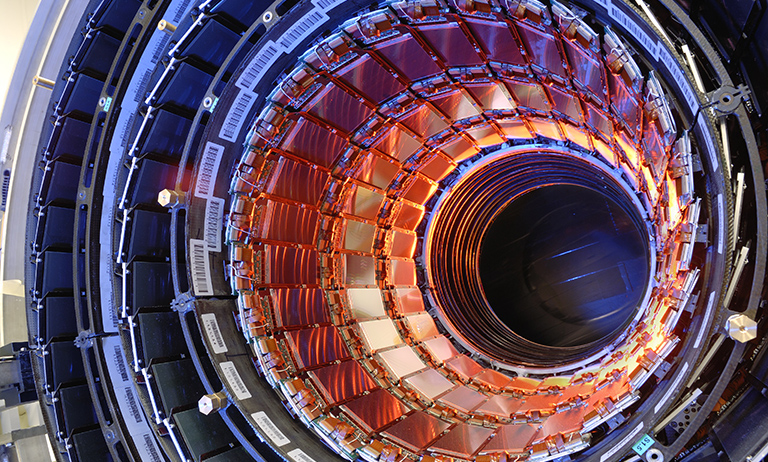
TOF Detector
Time of Flight (ToF) systems measure signal time difference between two detectors, which work as a start and stop counter, with a very good time resolution. In particle and astroparticle physics, they are mainly used to distinguish particle types. Typical detectors consist of scintillator counters and photodetectors with a time resolution of ~50-100 µs (see AMS-02 ToF) or of Resistive Plate Chamber (RPC) with a time resolution of ~30-50 µs. This configuration is a cost effective solution for large detectors (see MRPC of the ALICE experiment).
If the momentum of particles is known because it is selected naturally by the beam-line elements or measured by other detectors as a magnetic spectrometer, a further observable is necessary to identify particles. The difference between the time that two particles with the same momentum take to travel the distance between the two counters of a ToF system is proportional to the difference in the particle square masses. The sensitivity the system can achieve is dependent to the distance between the two counters and to the momentum of particles.
The observable measured by the system is the time taken for a particle to go from the first to the second scintillator, i.e. the difference between start and stop time Δt = t2 – t1 = L/(cβ), where L is the distance between the two scintillator, and β is the particle velocity. To distinguish between two particles, we have to consider the time-of-flight difference.
Where p is the momentum, βp1 and βp2 are the velocity of the two particles, and mp1 and mp2 are their masses.
If our particles are pions and kaons (mk~500 MeV, mπ~140 MeV), for example, assuming p=1GeV and L=1m, ΔT ~ 300 ps. Therefore a system with a time resolution of about 300 ps allows us to separate pions and kaons up to 1 GeV.

AMS-02 (Alpha Magnetic Spectrometer) is a detector designed to operate on the International Space Station (ISS) with the aim to study the universe and its origin by searching for antimatter and dark matter, and by performing precision measurements of cosmic rays composition and flux.
The core of the AMS-02 spectrometer is a large magnet necessary to measure the sign of the charge of each particle traversing the instrument. The combined use of several detectors helps to identify particle types and their characteristics.
A TRD (Transition Radiation Detector) identifies electrons and positrons among other cosmic-rays. A Silicon Tracker detects the particle charge sign, separating matter from antimatter.
A Ring-Imaging Cherenkov Detector (RICH) is used to measure with high precision the speed of cosmic-rays, an Electromagnetic Calorimeter (ECAL) allows to know the energy of incoming electrons, positrons and γ-rays; finally an Anti-Coincidence Counter (ACC) rejects cosmic rays traversing the magnet walls.
The AMS-02 ToF system is composed by 4 planes of scintillation counters, 2 above and 2 below the magnet. Its main goal is to inform the other sub-detectors of the incoming of an incident cosmic-ray; a particle able to traverse the Upper and Lower ToF is said to be inside to the AMS acceptance. The particle transit time into AMS is measured with a high level of precision (1.5×10-10 s) by the ToF, which provides the first level trigger for charged particles.
The ToF time resolution is sufficient to distinguish upward from downward moving particles, electrons from anti-protons at E < 1.5 GeV and, finally, also permit to distinguish nuclei up to Z≤20.
Each plane of the TOF system covers roughly a circular area of about 1.2 m2, with 12 cm wide scintillator pads of different length, overlapped by 0.5 cm to avoid geometrical inefficiencies.
The scintillators are coupled at both ends via plexiglass light guides to 4/6 Photo-Multipliers (PMTs); a bidimensional readout is provided.
The high absolute value of the magnetic field at the position of the PMTs (1.5 ÷ 2kG) forced the adoption of a special kind of PMT, the fine mesh Hamamatsu R5946.
The PMT has a bialkali photocathode, a borosilicate glass window and 16 fine mesh dynodes. The spectral response ranges from 300 to 600 nm with a maximum response at ∼ 420 nm (corresponding to a quantum efficiency of about 20%).
The fine mesh PMTs can operate inside intense magnetic fields, but their response depends strongly on the angle between the field and their longitudinal axis. Thus, tilted light guides were designed in order to minimize this angle for each PMT.
Since AMS-02 works on the ISS, the ToF detector undergoes variations of temperature from −20° C to +50° C. A group of 10 PMTs were tested in the thermal-vacuum simulator at the INFN laboratories of Bologna at a pressure of 10−7 ÷ 10−6 mbar with temperature varying between −30° C and +55° C. They were re-calibrated after each cycle of temperature and their characteristics remained the same.
- Confirmation
-
It looks like you're in the . If this is not your location, please select the correct region or country below.
You're headed to Hamamatsu Photonics website for GB (English). If you want to view an other country's site, the optimized information will be provided by selecting options below.
In order to use this website comfortably, we use cookies. For cookie details please see our cookie policy.
- Cookie Policy
-
This website or its third-party tools use cookies, which are necessary to its functioning and required to achieve the purposes illustrated in this cookie policy. By closing the cookie warning banner, scrolling the page, clicking a link or continuing to browse otherwise, you agree to the use of cookies.
Hamamatsu uses cookies in order to enhance your experience on our website and ensure that our website functions.
You can visit this page at any time to learn more about cookies, get the most up to date information on how we use cookies and manage your cookie settings. We will not use cookies for any purpose other than the ones stated, but please note that we reserve the right to update our cookies.
1. What are cookies?
For modern websites to work according to visitor’s expectations, they need to collect certain basic information about visitors. To do this, a site will create small text files which are placed on visitor’s devices (computer or mobile) - these files are known as cookies when you access a website. Cookies are used in order to make websites function and work efficiently. Cookies are uniquely assigned to each visitor and can only be read by a web server in the domain that issued the cookie to the visitor. Cookies cannot be used to run programs or deliver viruses to a visitor’s device.
Cookies do various jobs which make the visitor’s experience of the internet much smoother and more interactive. For instance, cookies are used to remember the visitor’s preferences on sites they visit often, to remember language preference and to help navigate between pages more efficiently. Much, though not all, of the data collected is anonymous, though some of it is designed to detect browsing patterns and approximate geographical location to improve the visitor experience.
Certain type of cookies may require the data subject’s consent before storing them on the computer.
2. What are the different types of cookies?
This website uses two types of cookies:
- First party cookies. For our website, the first party cookies are controlled and maintained by Hamamatsu. No other parties have access to these cookies.
- Third party cookies. These cookies are implemented by organizations outside Hamamatsu. We do not have access to the data in these cookies, but we use these cookies to improve the overall website experience.
3. How do we use cookies?
This website uses cookies for following purposes:
- Certain cookies are necessary for our website to function. These are strictly necessary cookies and are required to enable website access, support navigation or provide relevant content. These cookies direct you to the correct region or country, and support security and ecommerce. Strictly necessary cookies also enforce your privacy preferences. Without these strictly necessary cookies, much of our website will not function.
- Analytics cookies are used to track website usage. This data enables us to improve our website usability, performance and website administration. In our analytics cookies, we do not store any personal identifying information.
- Functionality cookies. These are used to recognize you when you return to our website. This enables us to personalize our content for you, greet you by name and remember your preferences (for example, your choice of language or region).
- These cookies record your visit to our website, the pages you have visited and the links you have followed. We will use this information to make our website and the advertising displayed on it more relevant to your interests. We may also share this information with third parties for this purpose.
Cookies help us help you. Through the use of cookies, we learn what is important to our visitors and we develop and enhance website content and functionality to support your experience. Much of our website can be accessed if cookies are disabled, however certain website functions may not work. And, we believe your current and future visits will be enhanced if cookies are enabled.
4. Which cookies do we use?
There are two ways to manage cookie preferences.
- You can set your cookie preferences on your device or in your browser.
- You can set your cookie preferences at the website level.
If you don’t want to receive cookies, you can modify your browser so that it notifies you when cookies are sent to it or you can refuse cookies altogether. You can also delete cookies that have already been set.
If you wish to restrict or block web browser cookies which are set on your device then you can do this through your browser settings; the Help function within your browser should tell you how. Alternatively, you may wish to visit www.aboutcookies.org, which contains comprehensive information on how to do this on a wide variety of desktop browsers.
5. What are Internet tags and how do we use them with cookies?
Occasionally, we may use internet tags (also known as action tags, single-pixel GIFs, clear GIFs, invisible GIFs and 1-by-1 GIFs) at this site and may deploy these tags/cookies through a third-party advertising partner or a web analytical service partner which may be located and store the respective information (including your IP-address) in a foreign country. These tags/cookies are placed on both online advertisements that bring users to this site and on different pages of this site. We use this technology to measure the visitors' responses to our sites and the effectiveness of our advertising campaigns (including how many times a page is opened and which information is consulted) as well as to evaluate your use of this website. The third-party partner or the web analytical service partner may be able to collect data about visitors to our and other sites because of these internet tags/cookies, may compose reports regarding the website’s activity for us and may provide further services which are related to the use of the website and the internet. They may provide such information to other parties if there is a legal requirement that they do so, or if they hire the other parties to process information on their behalf.
If you would like more information about web tags and cookies associated with on-line advertising or to opt-out of third-party collection of this information, please visit the Network Advertising Initiative website http://www.networkadvertising.org.
6. Analytics and Advertisement Cookies
We use third-party cookies (such as Google Analytics) to track visitors on our website, to get reports about how visitors use the website and to inform, optimize and serve ads based on someone's past visits to our website.
You may opt-out of Google Analytics cookies by the websites provided by Google:
https://tools.google.com/dlpage/gaoptout?hl=en
As provided in this Privacy Policy (Article 5), you can learn more about opt-out cookies by the website provided by Network Advertising Initiative:
http://www.networkadvertising.org
We inform you that in such case you will not be able to wholly use all functions of our website.
Close


